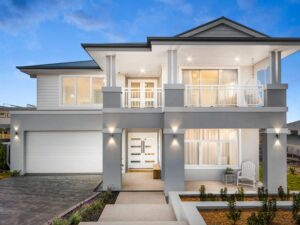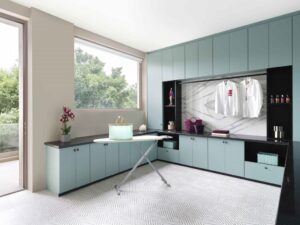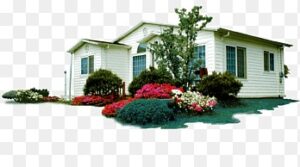So, you’re looking to invest your hard-earned money in some property. You’ve chosen the perfect time if you have the money and you don’t need a mortgage.
Ever since November 2023, prices have been plummeting, and on May 1st, the UK recorded its first property annual deflation since 2009. So, yes, if you have the money, now it’s a great time to buy.
Still, there is a lot more than just giving money to purchase a property. The first thing you need to know, without a doubt, is the type of properties, their features, and whether they will fit your needs well.
So, let’s have an in-depth look at some of the most common types of properties found in the UK.
What is a flat?
A residential flat is a self-contained living unit within a larger building or complex. It is designed to accommodate people as their primary place of residence. Flats are typically part of multi-story buildings and can vary in size, layout, and amenities.
A residential flat usually consists of several rooms, including a living area, one or more bedrooms, a kitchen, and a bathroom. Some flats may also have additional rooms like a dining area, a study, or a balcony.
The layout and features of a flat can vary depending on its size, location, and architectural design.
Residents of flats often share common facilities such as entrances, staircases, elevators, hallways, and sometimes recreational spaces or amenities like a gym, swimming pool, or communal gardens.
A property management company often manages residential flats in the UK. These entities are responsible for maintaining common areas, managing any shared facilities, and addressing issues related to the building’s upkeep and communal services.
Of course, there are several different types of flats, but let’s address the elephant in the room first.
What is the difference between a flat and an apartment?
For starters, “Flat” is a term more commonly used in British English and other Commonwealth countries, while “apartment” is predominantly used in American English.
This is the primary distinction in terms of language usage.
Moreover, Flats and apartments can vary in size and layout, but traditionally, flats in the UK tend to be smaller and more compact compared to apartments in the US. UK flats often have a more efficient use of space and may include a combined living and dining area.
At the same time, American apartments may offer more spacious floor plans with separate living and dining areas.
Furthermore, in the UK, flats are often associated with leasehold ownership, where the resident owns the right to occupy the flat for a specified period but does not own the freehold of the property. Apartments in the US can be either rented or owned, with ownership typically referred to as condominiums or condos.
Still, flats and apartments are mostly interchangeable, but the apartment is usually reserved for more luxurious accommodations. In contrast, a flat typically refers to a one-level space with basic amenities that allow the residents to live comfortably but not in too much luxury.
Purpose-built flats
In the UK, a purpose-built flat refers to a residential flat or apartment that has been specifically designed and constructed as part of a larger building or complex with the intention of providing self-contained living units.
The term “purpose-built” emphasises that the building was originally constructed to house multiple flats or apartments. These flats are not the result of subdividing an existing structure, such as a house or office building, into separate living units.
Purpose-built flats often feature amenities and facilities that are shared among residents.
These can include communal areas, such as entrance halls, staircases, lifts, gardens, parking areas, laundry rooms, gyms, or communal lounges. The specific amenities available can vary depending on the building and its intended target market.
Converted flats
Converted flats are the opposite of Purpose-built flats. They refer to a residential flat created by converting a building or part of a building originally designed for a different purpose.
This process involves transforming an existing structure, such as a house, office building, factory, or warehouse, into separate self-contained living units.
Converted flats can showcase a variety of architectural styles and layouts, depending on the original building’s design. They may retain certain architectural features or incorporate new elements to meet modern living standards.
Studio flats
A studio flat is an open-plan design, meaning there are no separate rooms for different functions like living, sleeping, and dining. Instead, a single room combines these areas into one integrated space.
Due to the absence of separate rooms, privacy can be limited in studio flats. However, some studio flats may have partition walls or screens to separate the sleeping area from the rest of the space, providing a degree of privacy.
Studio flats are generally smaller than other types of flats or apartments. The compact size is designed to optimise space utilisation, making them particularly suitable for single occupants or couples who prefer a minimalistic living environment.
Maisonettes
On the other side of the spectrum, there are the Maisonettes. They are larger flats that are arranged over two or more levels within a larger building.
Maisonettes have their own private entrance and typically offer more space and a layout that resembles a house rather than a traditional flat or apartment. Maisonettes typically have an internal staircase connecting the different floors.
They may span two levels (duplex maisonettes) or occasionally have additional levels. They often include their own private outdoor spaces, such as a garden, terrace, or balcony.
This additional outdoor area allows residents to enjoy outdoor living and may differentiate maisonettes from other types of flats.
What is a bungalow?
A bungalow is a type of single-story house or cottage that is typically characterised by its low, ground-level construction and a simple, compact design.
It originated in Bengal, India, and the term “bungalow” was derived from the Gujarati word “bangalo,” meaning “Bengali-style house.” Bungalows became popular during the late 19th and early 20th centuries and are still found in various parts of the world today.
Bungalows often have open floor plans, with fewer interior walls and partitions, allowing for a more spacious and flexible living environment. This design can provide a sense of continuity and flow between different areas of the house.
What is a cottage?
A cottage is a small, cosy, and typically picturesque house, often located in a rural or semi-rural setting. Cottages are known for their charm, simplicity, and traditional architectural features. They are quite popular here in the UK but not found exclusively here.
Cottages often showcase traditional architectural styles and designs, such as thatched roofs, exposed wooden beams, stone or brick exteriors, and small windows with window boxes.
These design elements contribute to the cottage’s quaint and rustic aesthetic. They typically have a modest number of rooms, often including a living room, kitchen, one or two bedrooms, and a bathroom. The layout is often straightforward and functional.
What is a terraced house?
A terraced house, also known as a row house, is a type of residential property that forms part of a continuous row of houses connected to one another.
Terraced houses are characterised by their shared side walls, with each house typically sharing a wall with the neighbouring houses on either side.
Terraced houses are typically narrow and rectangular in shape, with multiple floors. They are designed to make efficient use of space and are often built in urban or suburban areas where land is limited.
The houses are joined together in a continuous row, sharing walls with neighbouring properties.
This type of house often has a shared access path or walkway that runs along the front of the row, allowing residents to reach their front doors. The houses may have individual front gardens or a small paved area in front.
Terraced houses offer a combination of individual ownership and a sense of community. They are popular among families, young professionals, and individuals seeking a home in a convenient location.
While terraced houses typically have a smaller footprint compared to detached or semi-detached houses, they can provide comfortable and well-designed living spaces.
What is a semi-detached house?
A semi-detached house is a type of residential property that shares a common wall with one adjacent house while the other side remains detached.
It is a popular housing style in the UK, offering a balance between the privacy of a detached house and the affordability of a terraced or row house.
Semi-detached houses are prevalent in suburban areas and residential neighbourhoods, offering a balance between shared living and independence.
They provide a sense of community while maintaining privacy and allowing homeowners to enjoy their own gardens and outdoor spaces.
What is a detached house?
A detached house, also known as a single-family home, is a standalone residential property not connected to other buildings.
It is a type of housing unit that provides complete privacy and independence, as it is surrounded by its own land and does not share walls or structures with neighbouring properties.
Detached houses are commonly found in suburban areas, rural settings, or larger residential lots. They are often favoured by families or individuals seeking privacy, a sense of ownership, and the ability to create a personalised living space.
However, detached houses may be relatively more expensive compared to other housing types due to their larger size and individual land ownership.
When purchasing or living in a detached house, it’s important to consider the maintenance responsibilities for the property and any surrounding land, as well as any regulations or restrictions imposed by local authorities or homeowners’ associations.
What is a mansion house?
A mansion house, often referred to simply as a mansion, is a large and grand residential property typically associated with wealth, luxury, and prestige.
It is a type of upscale dwelling that goes beyond the size and opulence of a typical single-family home. Mansions are known for their impressive architectural design, extensive grounds, and luxurious features.
Mansion houses are typically associated with affluent individuals, celebrities, or families with substantial wealth. They serve as symbols of luxury, status, and architectural excellence.
Mansions can be custom-built or inherited estates, and they often require significant financial resources for acquisition, maintenance, and operation.
It’s worth noting that the term “mansion” can vary in different regions and contexts. In some cases, it may be used more broadly to describe any large and impressive house, while in others, it may be reserved for properties of exceptional size and grandeur.
Now that you know what each type of hose means and what are its main features, it’s time to choose where you will be moving your belongings to. Will it be a cottage, a semi-detached house or a simple Purpose-built flat? It’s all up to you, your abilities to afford it and your desires.





